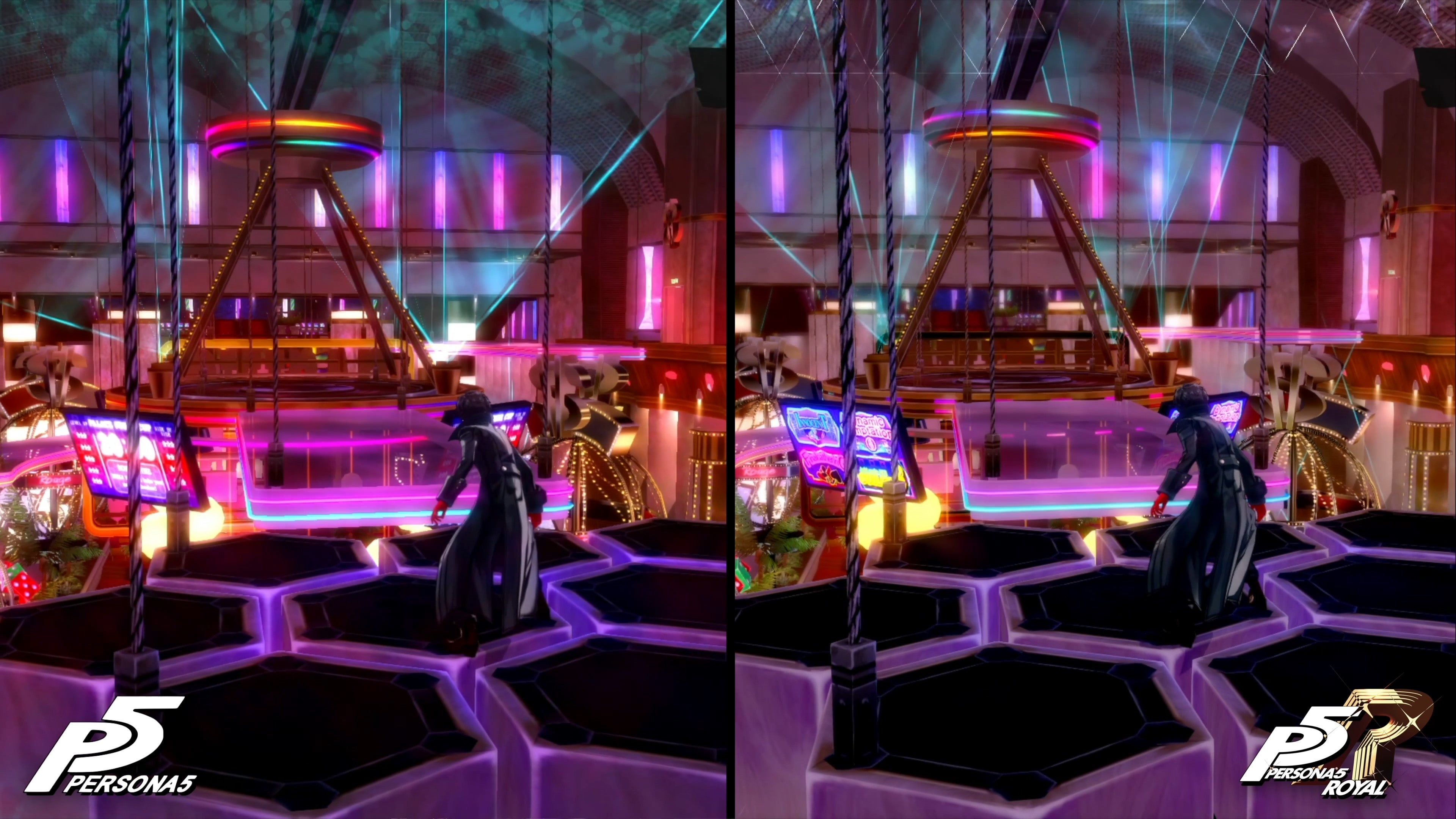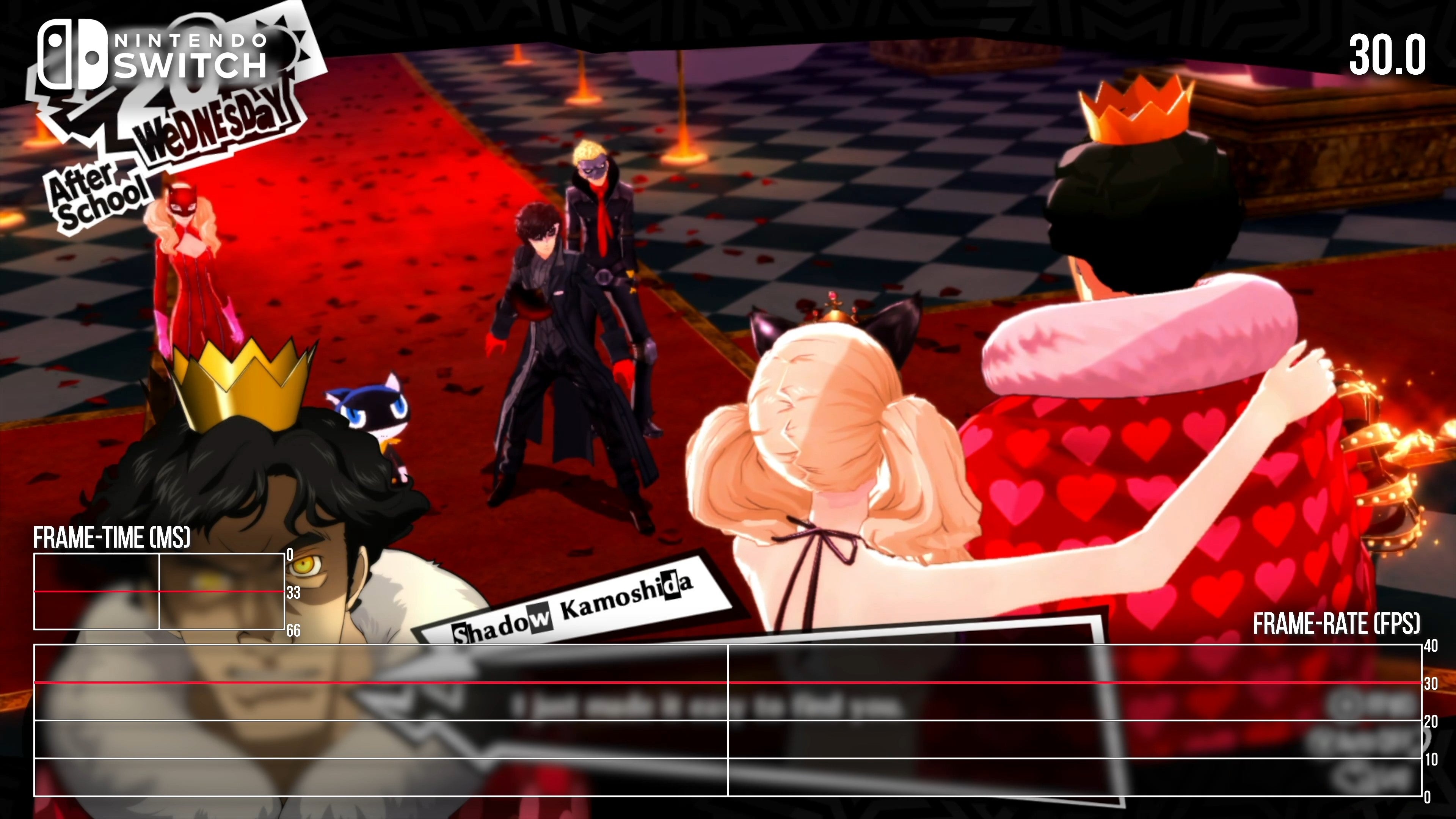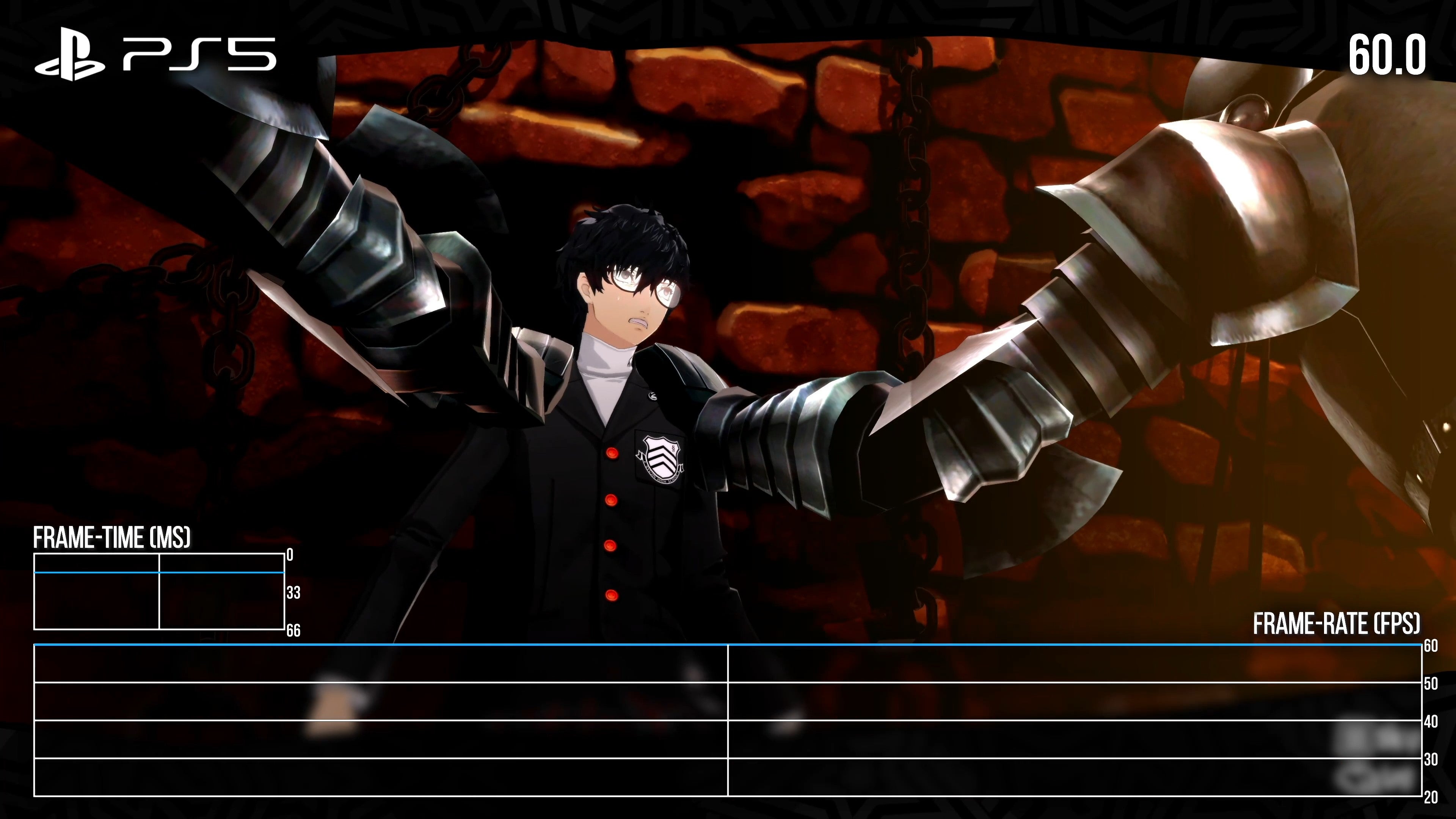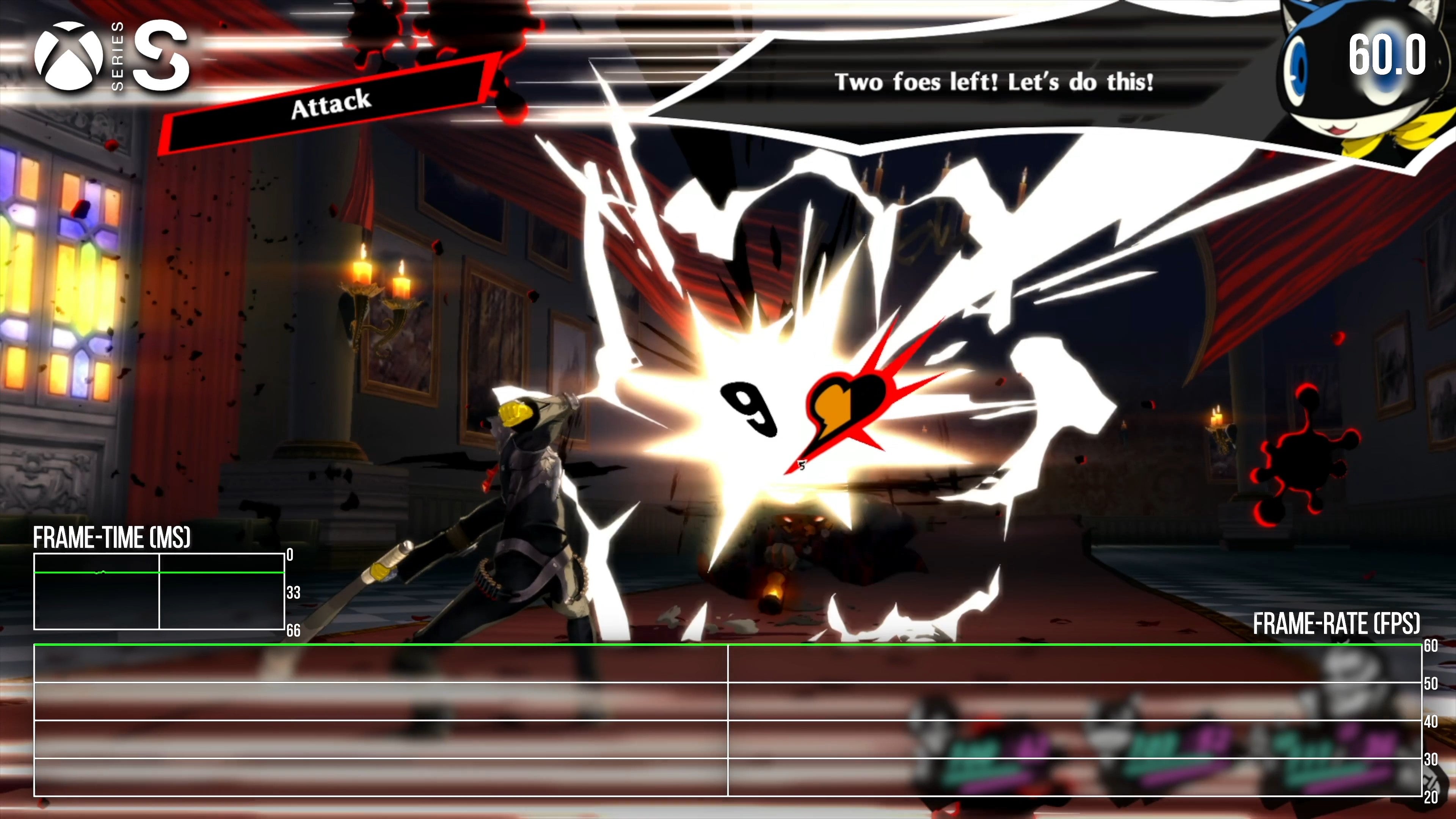
Persona 5 is considered one of the most celebrated JRPGs of contemporary instances, packing a compelling, character-driven story, a satisfying turn-based fight system and a assured sense of fashion. Technically talking, it is a very curious recreation: basically, it is a PS3 title at its core with belongings and rendering tech constructed round Sony’s 2006 system, however finally launched in 2016 on PS3 and PS4. An expanded re-release dubbed Persona 5 Royal got here out a couple of years afterward PS4, loaded with new content material, gameplay enhancements, and visible tweaks. After a three-year wait, that model of the recreation is lastly out on non-PlayStation platforms, together with current-gen console releases and a much-requested Swap port. So how does this PS3-derived recreation scale up to PS5 and Collection X and is the Swap launch all the things it ought to be?
Persona 5 had a little bit of an odd gestation. It was developed solely with PS3 {hardware} in thoughts, however after lacking a couple of launch dates it ended up transport on PS3 and PS4 in the fall of 2016, as considered one of the final main titles to hit Sony’s seventh-gen system. Fashions are stylised however low-poly, environments are boxy and use fundamental baked lighting, and texture decision is poor. The PS4 model of the recreation benefitted from a 1080p rendering decision and UI however left all the things else unchanged – a really barebones conversion of the PS3 code.
With Persona 5 Royal, you get the sense that Atlus tried to make the recreation match a bit higher on last-gen {hardware}. A few of the extra egregious-looking textures in the unique recreation are changed with higher-res belongings. New paintings adorns lots of the recreation’s buildings and streets. Depth of subject is added in sure gameplay segments, whereas 2D parts are redrawn with smaller textual content and new overlays. Lighting and color grading are additionally reworked, with the up to date recreation having a brighter, punchier look. These are the form of variations which might be solely readily obvious in side-by-side comparisons, however the enhancements are there. It is positively nonetheless a PS3 title at coronary heart in fact – which maybe makes it ideally suited to the Nintendo Swap.
The Swap translation of Persona 5 Royal is certainly a full and feature-complete model of the recreation with none basic cutbacks, that means that the identical construction, type, and gameplay of the different console releases is current and proper. On the technical aspect, there are points value praising as effectively: loading instances are nonetheless mercifully transient and successfully masked by brief animations, and regardless of a fairly large discount in file dimension, the animated cutscenes are largely freed from seen artifacting.
Nevertheless, I got here away with blended emotions on the final outcome. There are a couple of main points right here. Firstly, texture decision has taken a considerable hit throughout the board. Swap is utilizing texture belongings derived from the Royal model, however they’re considerably degraded relative to their exhibiting on PS4. At worst, the outcomes can look a bit mangled and in some instances we get lacking materials properties. This additionally has a knock-on impact on the recreation’s baked shadow, all main to the conclusion that the port is not fairly up there with the PS4 model. Not solely that, rendering decision has been reduce. In docked mode the recreation renders at 1440×810, barely above 720p. Transportable play is pared again additional to simply 960×540.
Persona 5 is a recreation that relies upon enormously on uncooked pixel depend to resolve effective particulars, like the skinny traces that encompass character fashions. It presents a really high-contrast aesthetic with none form of picture remedy, missing even a easy post-AA, so aliasing and different visible deficiencies are on clear show. At 1080p picture high quality is considerably marginal already however at 810p the picture seems fairly messy. It isn’t too dangerous, however I used to be anticipating a stronger outcome right here: basically, Persona 5 Royal continues to be a PS3 recreation at coronary heart, and lots of seventh-gen efforts run at 1080p in TV play on Swap.

| Console | 3D Decision | UI Decision | Efficiency |
|---|---|---|---|
| Swap | 810p/540p | 1080p/720p | 30fps |
| PlayStation 4 | 1080p | 1080p | 30fps |
| PlayStation 4 Professional | 2160p | 1080p | 30fps |
| Xbox One S | 900p | 900p | 30fps |
| Xbox One X | 2160p | 1080p | 30fps |
| PlayStation 5 | 2160p | 2160p | 60fps |
| Xbox Collection X | 2160p | 2160p | 60fps |
| Xbox Collection S | 1080p | 1080p | 60fps |
However it’s the transportable mode that actually disappoints. At 540p, Persona 5 Royal is rendering about 56 % of the full 720p panel decision – and it reveals. Anticipate a blurry and imprecise resolve with a careless dealing with of distant element. That is removed from the pixel-precise 720p I hoped for. No less than Atlus has opted for a bilinear scale right here, in contrast to another current low-res Swap releases, so aliasing artifacts aren’t unnecessarily highlighted. And the UI appears to render at the console output decision in each modes, so it tends to look a lot cleaner than the 3D content material. The one plus level? All 3D parts play out at 30fps with no issues by any means, so at the very least efficiency is constant.
I used to be upset by Swap, however outcomes enhance as we scale up to extra succesful package. By way of fundamental visible options, it is nearly what you’d count on – basically, we’re getting the PS4 model rendered at completely different pixel counts. There aren’t any readily obvious variations in texture high quality, shadows, draw distance, or anti-aliasing. However increased resolutions vastly enhance Persona 5’s picture high quality, and there is a large unfold right here. PS4 delivers a 1080p picture as beforehand talked about, as does the Xbox Collection S. PS4 Professional, Xbox One X, PS5 and Xbox Collection X all flip in a full 2160p resolve with none oddities to counsel a non-native presentation.
These are all pretty simple – however there are two exceptions. Firstly, PS4 Professional and Xbox One X get a 4K 3D decision, however miss out on a 4K UI, getting the identical 1080p 2D artwork as PS4. And the Xbox One S counts in at simply 900p for 3D content material, and seems to have a 900p UI as effectively, which feels unusual and out-of-place given the age and visible complexity of this recreation. A 1080p exhibiting looks as if it might be effectively inside the capabilities of the Xbox One, regardless of its limitations in additional demanding software program.

(*5*)
Stacking the consoles up side-by-side there is a large distinction in fundamental picture resolve. Persona 5 has no anti-aliasing of any form, so elevated rendering resolutions massively enhance the consistency of the presentation. Element that appears barely coherent on One S is evident and sharp on One X, for example. Nevertheless, even at 4K, there’s nonetheless loads of jagged edges and picture breakup on effective particulars, like character outlines and highlights. Efficiency does at the very least clock in at fairly respectable ranges. To interrupt it down, Persona 5 Royal targets 30fps on last-gen machines and 60fps on current-gen. And similar to Swap, that focus on is successfully met, as throughout all my hours of testing I did not see a single framerate drop in 3D content material on any house console platform. No matter system, you need to count on a really constant expertise right here.
Persona 5 has a variety of quick animation with out movement blur of any form, so cutscenes and sophisticated assaults generally is a bit laborious to observe in real-time on last-gen consoles. Every thing has a staccato, barely uneven look that arguably suits effectively with the recreation’s anime stylings however does not at all times really feel nice to have a look at. The increase to 60fps on current-gen machines principally resolves these points, with a lot cleaner animation in movement. At 4K60 on PS5 and Collection X, the recreation seems notably pleasing – a pointy, crisp, and clean rendition of Persona 5 that manages to maintain up remarkably effectively.
There’s one final platform to check out: the Steam Deck. Valve’s Linux-based transportable looks as if it would have the ability to get us the better of each worlds – a conveyable expertise that rivals current-gen consoles. And initially, that is precisely what you will get. Working the Steam Deck at 1080p decision, I used to be ready to run the recreation at max settings at 60fps in the opening sections with out situation with roughly similar visuals and efficiency to the Collection S. The Steam Deck even reported pretty gentle ranges of utilisation, with low GPU clocks and minimal CPU utilization.


Sadly, as quickly as I bought into the metropolis areas, I skilled some harsh efficiency drops for seemingly no cause, with no corresponding spike in utilisation or clock speeds. Decreasing decision or settings had no impact in my testing – the drops remained no matter what I attempted. Early dungeon sections additionally exhibited severe FPS points. Capping the frame-rate to 30fps utilizing the in-game frame-rate limiter appeared to work effective nonetheless, and ended up being preferable to the SteamOS limiter because it incurred a a lot smaller improve to enter latency. Switching the show to 40Hz is another choice for a smoother, constant expertise. These could be my most popular methods to play on Steam Deck – however I do not assume the Deck is especially well-suited to this type of recreation.
And that is as a result of Persona 5 has a pointy, daring color scheme that makes intensive use of pure black. Loads of UI parts and darker 3D content material are meant to be fully black. Sadly, the Steam Deck’s IPS LCD show is pretty mediocre by trendy requirements and lacks the distinction ratio to actually do Persona 5’s artwork justice. Uninteresting grey tones have a tendency to dominate the picture, notably in areas at night time. The Swap OLED finally ends up producing a way more visually dynamic picture in my view for transportable play, with a daring, punchy look with lovely pure blacks. It presents a lot lower-res 3D however packs show expertise that may be a higher match for this specific title. It isn’t a straightforward selection, but when I had to select I feel I might lean in the direction of an OLED Swap for this recreation.
In abstract, Persona 5 Royal is a extremely engrossing, distinctive title that packs serialised, TV-style storylines right into a 100+ hour single-player journey. Relative to the unique recreation, that is extra of a remix than a considerably expanded title – I’ve overwhelmed each and my sense is that there is in all probability about 15 or so hours of further content material right here, as well as to numerous gameplay tweaks and enhancements. However that is positively the greatest model of Persona 5, and now it is obtainable to play throughout basically all trendy techniques. The sport scales pretty predictably throughout the extra succesful house console platforms, however these ports do not appear to translate Persona 5’s PS3-era tech very effectively, so extra power-constrained consoles – the Swap specifically – are available with severe visible compromises relative to the PS4 launch. There is no dangerous ports right here essentially, only a couple that fall beneath expectations for contemporary conversions of seventh-gen software program.